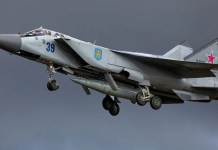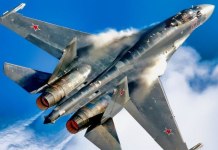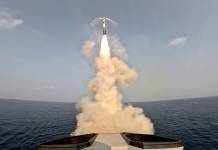Under the newly introduced Defense ministry leasing guidelines, the Indian Navy is looking to lease light utility helicopters for its logistical needs. The Navy is looking to fill vital gaps in the frontline warships by urgently leasing 12-18 helicopters from foreign vendors.
Amid the ongoing border row between India and China, last month Navy leased two Sea Guardian drones from the American giant General Atomics for intelligence gathering, surveillance and reconnaissance over the Indian Ocean.
With increased Chinese People’s Liberation Army’s (PLA) activity in the region, the need for drones has increased to keep an eye on the enemy.
As reported earlier by EurAsian Times, in 2019, India had rented an Akula-1 class nuclear-powered attack submarine from Russia for a period of 10 years at a $3billion contract. Russia will deliver the Akula-1 class submarine, to be known as Chakra III, to the Indian Navy by 2025.
The Navy has approached foreign vendors to enquire about short term lease of helicopters that can be used to transport supplies and personnel between ships with a secondary surveillance role, reported Economic Times, citing sources.
It further said that the helicopters that will be leased will later be refitted with light weapons by the Navy as per its requirement adding that the helicopters will likely be equipped only with a machine gun during the lease period.
The Navy currently possesses the multirole Chetak choppers that were first delivered in 1965 and have been the backbone of the Search and Rescue (SAR), Casualty Evacuation and Route Transport Role (RTR) operations. However, the Navy is now looking to replace the ageing fleet of choppers.

The indigenous Advanced Light Helicopters (ALH), that the navy is currently operating, comes under 5.5-ton weight class and are reportedly difficult to operate from smaller vessels. It is majorly used for passenger/commuter role, VIP travel, causality evacuation, search and rescue and training.
While the navy is already operating the ALH in a utility role, it requires 111 helicopters for deployment onboard ships to carry out multiple roles, including surveillance and ferrying supplies. The requirement is urgent and a specialized chopper is needed that can be quickly deployed and retrieved and can be stored in the space-constrained hangar onboard all vessels.
The navy is already in the process of acquiring the choppers under Rs. 21,000 crore ‘Make in India’ initiative but has rejected the contract for Advanced Light Helicopter (ALH) by Hindustan Aeronautics Limited (HAL). The Indian Navy believes that that Advanced Light Helicopters by HAL does not meet its requirement and that there is a dire need to establish alternative capability in the private sector to manufacture modern choppers.
The process to acquire the choppers is already in advanced stages with four Indian companies shortlisted who can partner with a foreign technology provider to make the helicopters domestically.
The Defense Ministry introduced a stop-gap solution under the Defence Acquisition Procedure (DAP) 2020. The government allowed the three services — Army, Navy and the Air Force — to lease equipment rather than buying them in one go.
Experts believe that leasing allows a cost-effective process to acquire military equipment without a commitment to capital expenditure.
“While leasing can mitigate the burden on the military’s stressed capital budget, additional funds would be needed to pay the rent,” noted Amit Cowshish, former Financial Advisor (Acquisition), Ministry of Defence. He added that even leasing requires a “realistic assessment of likely budgetary allocations before opting for large-scale equipment leasing.”
However, critics believe that even for leasing military equipment, a formal process of acceptance of necessity (AON), request for information (RFI) and so on are required to be followed, which is similar to the regular acquisition process and can be time-consuming.





